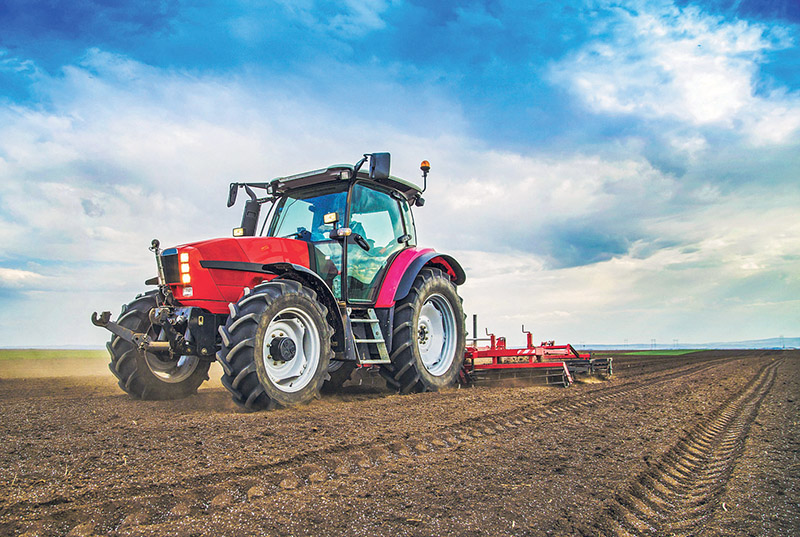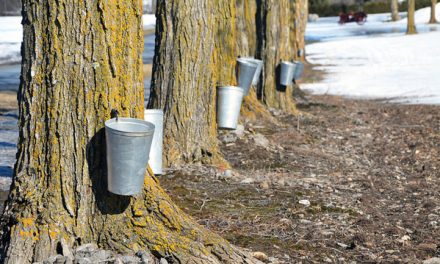By Tom Manley
AgriNews Contributor
For conventional and organic field crop farmers, the spring rush and anxiety are quite similar; both farmers are fretting about the weather and the markets, afraid of too much or too little water, or a cold snap and snow in the middle of May.
The crop sequence is also quite similar, spring cereals first in the cold soil, then corn in early May, and finally soybeans in late May or early June. But there are some striking differences in the cropping methods.
While this presentation describes a popular approach to managing organic field crops, there are many adaptations to suit the particular situation of each farm including the weather, the equipment available, and the management preferences of the farmer.
Some organic farmers try to frost plant spring cereals. They would have incorporated crop residues and levelled the seed bed in the fall. Soybeans were in the rotation ahead of cereals. The farmer counts on excellent drainage and good weather in March to get rid of the snow and any pooled water. This practice calls for flat land because the absence of crop residue on the surface can lead to erosion with the spring run-off. The night frost in late March or early April will harden the ground, allowing the farmer to pass with light equipment to drill the cereal into the crusted soil.
A frost seeding allows the spring cereal to germinate in the preferred cold soil, ahead of most weeds as an excellent weed competition strategy. After the cereal has safely emerged, the farmer breaks the soil crust and eliminates young weeds with a rotary hoe. S/he will pass again later with a finger weeder to flush out a new germination of annual weeds, and then again, a couple of weeks later for a final flush of weeds. On the final pass of the finger weeder, a broadcaster is mounted on the weeder to under seed red clover as a weed suppressor and a nitrogen fixer for the corn crop to follow the next year.
The organic farmer uses a high seeding rate for spring cereals, in the range of 150 pounds per acre, sometimes even more. The high plant population compensates for some plant damage from the mechanical weed control, increases the competition against weeds, develops a denser canopy to suppress weeds, and improves the overall yield. The high plant population is supported by a healthy reserve of stable non-volatile nitrogen from manure, compost, and clover in the rotation.
The corn and soybean routines are just the opposite. These crops prefer warmer soils. The organic farmer typically enters the field two weeks later than the conventional neighbour just to allow the soil to warm up. The corn and soybean seeds need a warmer soil for strong germination and quick emergence, and they do not benefit from a chemical seed treatment to fend off disease in the cool soil. Furthermore, the warm soil activates microbiological activity which is critical to transfer nitrogen to the young crop.
The organic farmer uses the preplanting period for soil preparation, mechanical weed flushing, and for a spring application of compost.
In the corn and soybeans, there is a specific weed suppression routine. The organic farmer will seed corn and soybeans about five days after the last soil disturbance, at a depth of 2 inches. This delay allows annual weed seeds to germinate. About three days after seeding, the farmer will perform a pre-emergence mechanical weed control with either a rotary hoe or a finger weeder. The rotary hoe is suited for hard crusted soils or the presence of excessive crop residue on the surface.
Since rotary hoes and finger weeders only disturb the soil surface, they kill the weeds that have just germinated without disturbing the germinating crop below the soil surface.
Finger weeders and rotary hoes are wide light machines that require relatively small tractors. A farmer can cover a large field very quickly with efficient fuel consumption and minimal compaction. Farmers have calculated the total cost at $15 per acre for two weed control passes, including fuel, amortization, maintenance, and labour.
In the case of row crops like corn and soybeans, further weed control is performed with a shallow scuffler with one or two passes until the crop canopy has closed. Organic field crop farmers have abandoned the S-tine cultivator a long time ago. The farmer will also fight weeds with corn and soybean varieties that produce large leaves and create a prompt dense canopy. Some farmers have tried solid seeding soybeans to create the canopy and compete with weeds, but that strategy does not work. The organic farmer needs a bushy soybean variety suitable for wide rows with inter-row mechanical weed control and dense canopy to shade out the weeds.













